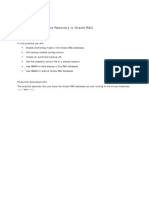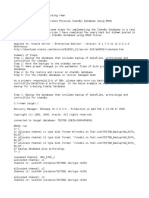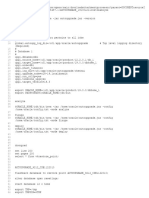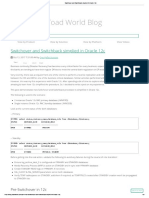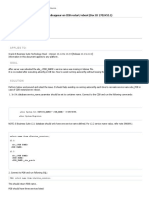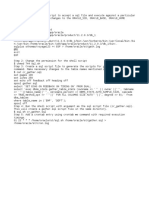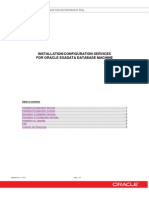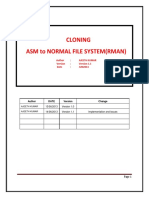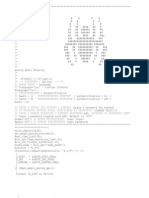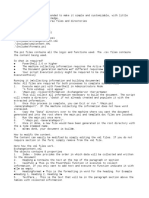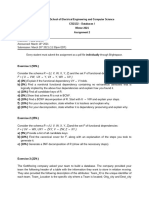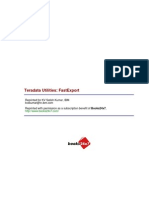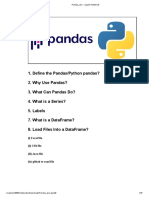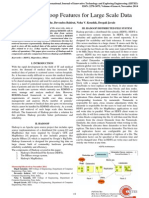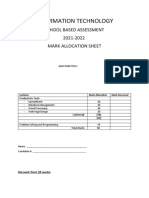0% found this document useful (0 votes)
205 views9 pagesUAT DB Build Using RMAN
The document provides steps to migrate the production ABA database to the UAT environment using RMAN backup. It involves cloning the production database to create the UAT database instances on two nodes, configuring the instances as an Oracle RAC database, applying necessary post-restore configuration changes and optimizations.
Uploaded by
moni.aro28Copyright
© © All Rights Reserved
We take content rights seriously. If you suspect this is your content, claim it here.
Available Formats
Download as DOCX, PDF, TXT or read online on Scribd
0% found this document useful (0 votes)
205 views9 pagesUAT DB Build Using RMAN
The document provides steps to migrate the production ABA database to the UAT environment using RMAN backup. It involves cloning the production database to create the UAT database instances on two nodes, configuring the instances as an Oracle RAC database, applying necessary post-restore configuration changes and optimizations.
Uploaded by
moni.aro28Copyright
© © All Rights Reserved
We take content rights seriously. If you suspect this is your content, claim it here.
Available Formats
Download as DOCX, PDF, TXT or read online on Scribd
/ 9

